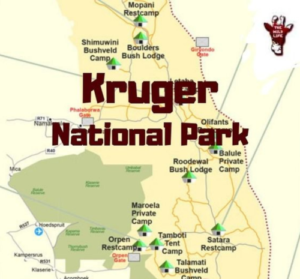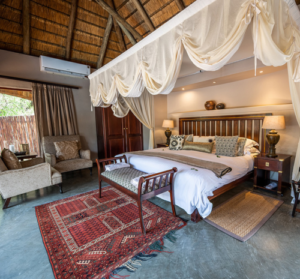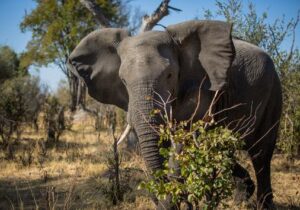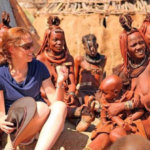 Kruger National Park is a world-renowned destination, often regarded as the crown jewel of South Africa’s wildlife reserves. With its sprawling savannas, dense forests, and winding rivers, it is home to an impressive array of wildlife, including the famed Big Five: lions, leopards, elephants, rhinos, and buffaloes. Covering nearly 19,500 square kilometers, Kruger is not only South Africa’s largest national park but also one of the most diverse game reserves in the world.
Kruger National Park is a world-renowned destination, often regarded as the crown jewel of South Africa’s wildlife reserves. With its sprawling savannas, dense forests, and winding rivers, it is home to an impressive array of wildlife, including the famed Big Five: lions, leopards, elephants, rhinos, and buffaloes. Covering nearly 19,500 square kilometers, Kruger is not only South Africa’s largest national park but also one of the most diverse game reserves in the world.
If you’re planning a visit, this comprehensive guide will help you navigate the park, understand its rich biodiversity, and make the most of your safari adventure.
1. History of Kruger National Park
Kruger National Park has a rich history dating back to 1898 when it was first established by Paul Kruger, the then-president of the South African Republic. Initially named the Sabie Game Reserve, its goal was to protect South Africa’s dwindling wildlife from hunting and human encroachment. In 1926, it became Kruger National Park, officially opening its gates to the public as a national treasure.
Today, Kruger stands as a symbol of conservation, offering refuge to over 147 mammal species, 500 bird species, and countless plants, reptiles, and insects.
2. How to Get to Kruger National Park
 Kruger National Park is located in northeastern South Africa, spanning the provinces of Mpumalanga and Limpopo. There are multiple entry gates scattered across the park’s perimeter, making it accessible whether you’re traveling from Johannesburg, Pretoria, or even nearby countries like Mozambique.
Kruger National Park is located in northeastern South Africa, spanning the provinces of Mpumalanga and Limpopo. There are multiple entry gates scattered across the park’s perimeter, making it accessible whether you’re traveling from Johannesburg, Pretoria, or even nearby countries like Mozambique.
By Air:
The closest airport is Kruger Mpumalanga International Airport (MQP) in Nelspruit, about 50 km from the nearest park gate. You can also fly into Skukuza Airport, located inside the park, or opt for Phalaborwa Airport if you’re entering from the north.
By Car:
Self-driving is a popular option. The park’s main entry gates are easily accessible from Johannesburg (about 4.5 hours away), with well-maintained roads leading to gates like Paul Kruger Gate, Phalaborwa Gate, and Crocodile Bridge Gate. The drive itself offers stunning views of the South African landscape.
3. Best Time to Visit Kruger National Park
The best time to visit Kruger National Park largely depends on what you hope to experience. The park offers year-round beauty, but each season has its unique draw:
Dry Season (May to October):
This is the prime time for wildlife viewing. With less vegetation and shrinking waterholes, animals congregate around rivers and watering holes, making them easier to spot. Cooler temperatures also make it more comfortable for long game drives.
Wet Season (November to April):
During these months, the park transforms into a lush, green paradise. While the vegetation is denser (which can make wildlife spotting more challenging), this is the best time for birdwatching as migratory species arrive. The landscape is also vibrant, and baby animals are often seen during these months.
4. Accommodation in or near Kruger National Park
 Kruger offers a variety of accommodations to suit different budgets and preferences, from basic campsites to luxury lodges. The park is well-known for its rest camps, which are managed by SANParks (South African National Parks) and are spread across the park.
Kruger offers a variety of accommodations to suit different budgets and preferences, from basic campsites to luxury lodges. The park is well-known for its rest camps, which are managed by SANParks (South African National Parks) and are spread across the park.
Rest Camps:
These camps are popular among self-drive visitors, offering bungalows, cottages, and safari tents. Camps like Skukuza, Satara, and Lower Sabie are some of the largest and most popular, equipped with amenities such as restaurants, shops, and fuel stations.
Private Lodges:
For those seeking a more luxurious experience, Kruger is also home to numerous private lodges that provide exclusive safari experiences. Many of these lodges are located in the park’s private concessions or in adjacent private reserves like Sabi Sands or Timbavati. These lodges offer guided game drives, gourmet dining, and lavish accommodations.
Camping:
For adventurous visitors, there are several designated camping areas where you can pitch a tent or park a caravan. Campsites are usually equipped with basic facilities such as shared bathrooms and kitchens.
5. Exploring Kruger National Park: Game Drives and Guided Safaris
There are two main ways to explore the vastness of Kruger National Park: self-driving and guided safaris.
Self-Driving Safaris:
Kruger is one of the few national parks in Africa where visitors can explore on their own. The park has a well-maintained network of roads, both paved and gravel, and most are suitable for standard vehicles. Visitors can rent a car and embark on game drives at their own pace, stopping at lookouts, picnic spots, and bird hides.
Self-driving offers flexibility, but it also requires patience and a good eye for spotting wildlife. Early morning and late afternoon are the best times for game viewing, as animals are most active during these hours.
Guided Safaris:
For those who prefer a more immersive experience, guided safaris are available. These can be booked through travelling agencies. SANParks offers a variety of guided experiences, including morning and sunset game drives, night drives, and bush walks. Trained rangers share insights into the park’s ecology and improve your chances of spotting elusive animals like leopards or wild dogs.
Night drives are especially thrilling as they allow you to witness the nocturnal activities of Kruger’s wildlife, including lions on the hunt and leopards slinking through the shadows.
6. The Big Five and Other Wildlife
 Kruger National Park is home to an incredible diversity of animals, and the park is particularly famous for its Big Five: lions, elephants, leopards, rhinos, and buffaloes. Spotting all five on a safari is a thrill for any wildlife enthusiast.
Kruger National Park is home to an incredible diversity of animals, and the park is particularly famous for its Big Five: lions, elephants, leopards, rhinos, and buffaloes. Spotting all five on a safari is a thrill for any wildlife enthusiast.
- Lions: Kruger is one of the best places in the world to see lions. They often rest in the shade during the day but are most active during the early mornings and late evenings.
- Elephants: Kruger’s elephant population is one of the largest in Africa. You’ll often see these gentle giants at waterholes or grazing in the park’s vast grasslands.
- Leopards: Leopards are notoriously elusive, but Kruger offers plenty of opportunities to see them. Look for them resting in trees or near water sources during early mornings.
- Rhinos: Both black and white rhinos can be found in Kruger, though their populations are vulnerable due to poaching. Poaching awareness efforts are ongoing to protect these majestic creatures.
- Buffaloes: Buffaloes move in large herds and can often be seen grazing in the park’s open areas. They are one of the most dangerous animals in Africa due to their unpredictable nature.
Beyond the Big Five, Kruger hosts giraffes, zebras, hippos, crocodiles, and a wealth of birdlife. Birdwatchers will be delighted by the park’s array of species, from the vibrantly colored lilac-breasted roller to the imposing martial eagle.
7. Top Tips for a Successful Safari in Kruger
- Start Early: The best time to spot wildlife is during the early morning or late afternoon. Gates usually open around sunrise, so set your alarm for a head start.
- Bring Binoculars: While many animals can be seen up close, binoculars are essential for spotting birds and distant wildlife.
- Stay Hydrated: Temperatures in Kruger can soar, especially during the summer months. Always carry plenty of water on your game drives.
- Follow Park Rules: For your safety and the safety of the animals, always remain in your vehicle unless at designated areas, and never feed the wildlife.
8. Conservation Efforts and Responsible Tourism
Kruger National Park plays a vital role in conservation efforts. From anti-poaching campaigns to habitat preservation, the park is committed to protecting South Africa’s natural heritage. Visitors are encouraged to practice responsible tourism by minimizing waste, respecting wildlife, and supporting local conservation initiatives.
Conclusion
Exploring Kruger National Park is an unforgettable experience, offering a glimpse into one of Africa’s most iconic wildlife sanctuaries. Whether you’re seeking the thrill of seeing the Big Five or simply want to immerse yourself in the beauty of nature, Kruger has something for everyone. From self-drive safaris to luxurious lodges, this vast park provides endless opportunities for adventure, discovery, and relaxation.



